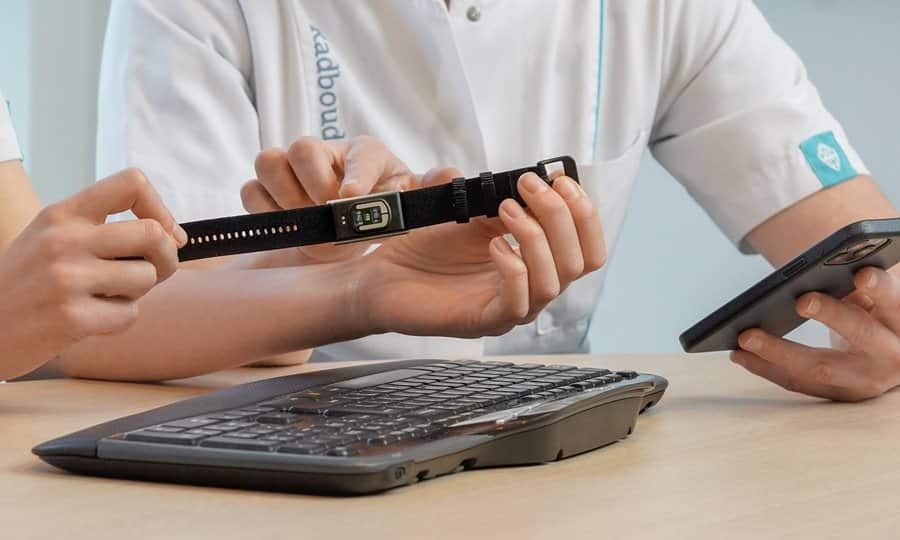
[box]MyDiagnostick is a medical device, intended to discriminate atrial fibrillation, a common arrhythmia, from normal cardiac rhythm. Atrial fibrillation can cause a stroke, so it’s important to know when it occurs. MyDiagnostick is an ECG recorder that has the shape of a stick with metallic handles – electrodes – at both ends. When holding MyDiagnostick with your two hands, it will automatically switch on and offer results in one minute. The device can record and store over 100 ECG’s. The ECG strips stored in MyDiagnostick can be retrieved through a USB connection by the physician, enabling clinical confirmation and documentation.[/box]

A feverish mood dominates at the offices of Applied Biomedical Systems in Maastricht, the parent company of MyDiagnostick located at the Brightlands Maastricht Health Campus. A team of six employees are working hard on the launch of the patient version of the smart medical device. It won’t be available on the market until late 2019 or early 2020. Until that time, the product development is running parallel to the procedure of testing the product’s compliance with laws and regulations and incorporating feedback from medical practitioners and users. This is an intensive process, but also unavoidable. “The functionality and ease-of-use for consumers are after all the most important things,” according to director Vincent Larik.
Red or green light
The first version of MyDiagnostick was produced in 2012. Patients hold the stick with two hands for one minute and it makes an ECG. MyDiagnostick emits a signal immediately after the reading is complete in the form of a red or green light. If the light turns red, there is a good chance the patient suffers from atrial fibrillation. By giving MyDiagnostick to the patient to take home with them, the measurements may be repeated at various times at home. The doctor can then read the ECG results remotely. MyDiagnostick is a solution that is much easier for patients to use than the measuring devices used in the past. In addition, the measurements are done a lot faster, giving patients immediate answers about whether they suffer from atrial fibrillation.

“More than 3,000 MyDiagnosticks have now been sold,” Larik says. “Our sales activities have focused mainly on GPs who can make the device available to patients if necessary.” However, in order to achieve a broader impact and to keep the price of the product more reasonable for consumers, the introduction of a patient version of the product is the next step in MyDiagnostick’s evolution. “We want to make something that really helps patients, that they can purchase themselves, and most importantly, something that is easy to use.”
True innovation
One of the most important conclusions from the development process is that MyDiagnostick 2.0 will no longer be in stick form. The new version is smaller and rectangular. “Ultimately we realized that a new stick wouldn’t work”, Larik says. “We want to make it easy for patients to take the device with them and use it in a flash. This can also be done with the current stick, but not as well as we’d like. This is what true innovation is. Sometimes you have to dare to let go of or adapt the original idea or your vision if this will benefit the final results.”
The company’s mission remains the same: reducing atrial fibrillation, one of the most common cardiac arrhythmia conditions. “Arrhythmia, or an irregular heartbeat, can result in the blood not being circulated properly which can lead to a stroke. Early detection of cardiac arrhythmia can help prevent a stroke. A solution like MyDiagnostick will really make a difference.”
Photos: MyDiagnostick








